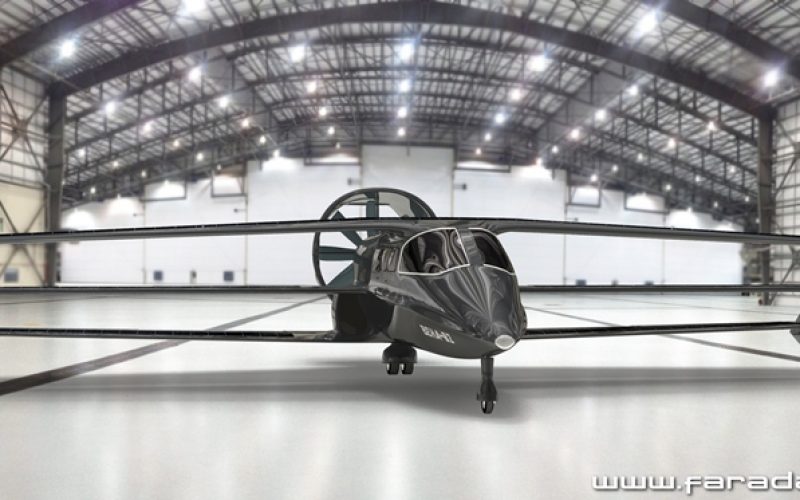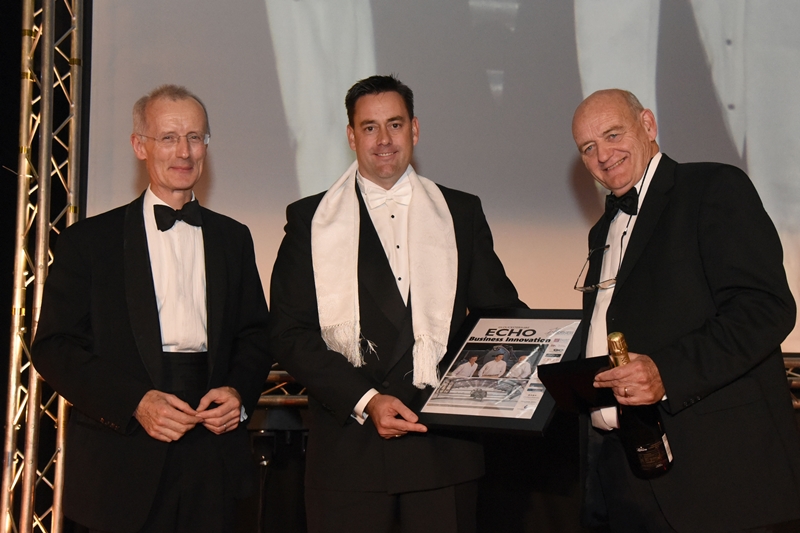
Last month I had the pleasure of speaking to Neil Cloughley, Managing Director and Founder of Faradair®, about the highs and lows of innovation and entrepreneurship.
Neil describes innovation as “finding problems and creating solutions for those problems.”
My key take out is that it’s been a combination of problems, experiences, and stories combined with a steely ability to spot a market opportunity that has led Neil to where he is today.
Neil’s story started when he was a teenager when his dad, Trevor Cloughley built an unmanned air vehicle (UAV) company. This idea was before its time and unfortunately the company could not survive without UK Government interest. Sadly the assets of the business were sold to a group in the USA who were then awarded a contract by the US Government worth $80m. Neil aged 16 promised his dad that he would “finish the work his dad had started.”
Neil built his first career in IT. Back in the late 90’s he had an idea for a tablet computer. He partnered with Siemens, SUN Microsystems and others in 2001 to develop one of the world’s first tablet computers. It would have enabled people to send and receive email on the move from a device smaller than a laptop. Despite being painfully obvious now, fifteen years or more ago it failed to gain traction – again another product before its time. One VC suggested the tablet, which although was “a nice idea would never take off because people had laptops”. In 2004 Apple ‘invented’ the iPad and over 280 million tablets have since been sold since. While frustrating, lessons were learned from both Trevor and Neil’s ‘before their time’ experiences.
When the IT market crashed in 2002 Neil started his second career selling commercial aircraft. (like you do!) It reignited his passion for aviation that he had as a child. He became an expert.
Back to Trevor’s promise
Air travel has changed over the years. There was a time when air travel between cities on a daily basis was relatively common. Small aircraft would shuttle 8-10 passengers communing between cities. Over time the costs, noise and emissions increased making this sort of commuter travel untenable and the UK is now solely reliant on its overcrowded and expensive road and rail networks for this type of travel.
For commuters this means extortionate prices to travel in the UK and at the same time a disconnect as the cost of plane travel overseas becomes cheaper. How is it that you can travel to Sweden for just £16.99 with a low-cost airline but to get from Cardiff in Wales to London and back at peak time and its £225? And a lot of the time you don’t even get a seat!
So in 2014, Neil set up Faradair, an aviation company to solve three fundamental problems facing regional flight – noise, emissions and operational costs, to make life better for commuters and the businesses they serve and to keep his promise to his dad to “finish what he started”.
Looking at problems differently
Faradair decided to look at the problems of noise, emissions and operational costs differently. The greatest fuel consumption happens at take-off, so Faradair has created a hybrid aircraft that uses quiet electric motors for take off. The engine takes over for the flight and the electric battery recharges over the duration of the flight all ready for the next take off.
The aircraft looks unusual because it has three wings. This is to reduce the take off and landing space required so there is more flexibility for take offs and landing in urban areas and using small airstrips.
Using techniques developed by NASA and other research groups they have designed a shroud/duct around the engine fan/propeller to reduce noise. The combination of a slow spinning fan and electric motors for take-off enables the aircraft to be ultra-quiet.
Faradair call their aircraft BEHA – Bio-Electric-Hybrid-Aircraft. In plain English it means it’s a quiet, economical, low emission aircraft, that seats 6-8 people. It’s a viable form of regional transportation with ultimate intention to build a larger 20-30 seat version in the future.
By the end of 2016, Faradair had won two business awards including one for Innovation, secured initial angel investment, added key personnel to the team to enable the development of a prototype to prove that the BEHA does deliver the efficient, quiet and cost-effective flight that it promises.
“I was so proud to be on stage receiving an award with my dad, because it was recognition of what he started, but his technology was just 20 years too early” Neil Cloughley Director and Founder, Faradair

Challenges and opportunities
“It’s taken two years to get this far and it often feels like you take two steps forward just to take a step back” Neil Cloughley Director and Founder, Faradair
Despite an expert, well-respected and connected team Faradair has struggled to attract the large investment it needs to move to prototyping. Venture Capitalists perhaps don’t know or understand the aviation market and the BEHA development time may be longer than their funds allow. There is also, in the minds of investors uncertainty about the long-term investment needed to get off the ground (no pun intended). However Faradair has mitigated some of this with the development of a new hybrid aircraft engine that will be available to be sold to other aircraft owners and manufacturers in the near future.
The Aerospace Technology Institute (ATI) is responsible for funding, developing and maintaining the UK’s prominence in the aerospace sector, yet Faradair is out of scope for most grant funding criteria because they are not working with or part of the commercial aviation supply chain for the big ‘Tier 1’ aviation companies.
It strikes me that there is an irony that to apply for a grant to innovate you have to already be working with one of the incumbent giants that already define ‘how things are done’ leaving limited scope for different thinking and innovation to flourish.
Another big challenge for Faradair is that the UK does not resource aviation in the same way that other countries do. After months of perseverance, Faradair finally secured a meeting with minister for Aviation on May the 4th. A general election was called and all departments closed on May the 3rd and now the process starts again as Faradair must build new relationships with the new Government aviation personnel. Neil says “MPs talk about supporting SMEs but in our experience, when it actually comes to it they do not follow through with their promises to ensure that the civil servants are delivering the funds where they are needed most”.
“We’ve had fantastically supportive angel investment and we’ve also had to beg and borrow from friends and family. It’s not easy.”
Convincing the first person, finding your first follower, as David Sivers outlines in dancing guy, transforms the ‘lone nut’ into a leader. The first follower is the flint that ignites the leaders ideas into a fire.
I don’t believe that Neil is a lone nut, but when you are trying to drive significant change in a sector with some well established big players it can feel like it.
However where one door is sticky to open, other opportunities present themselves.
Whilst the BEHA was initially designed for regional flights for people between cities, it’s flight characteristics and capabilities are now opening new market opportunities, for example, to aid conservation efforts in combating poachers and tracking wildlife, air taxi services for organisations, hotels, resorts and government organisations, police and emergency service operations, light freight/utility cargo operations during unsocial hours and many more roles.
5 tips to succeed at innovation
Neil’s advice from his experience when it comes to innovation is;
- Be absolutely clear on what you are trying to achieve and what is being asked from you. Get it in writing in black and white (email is fine). Ensure both parties agree so there is no room for misunderstandings.
- Allow time because the most important things can come from the most bizarre angle. To spot those lucrative opportunities that come from left field you need time. If you are asked to come up with something by 3pm tomorrow, you might be able to deliver something but it’s not likely to be the best solution.
- You need investment – innovation is hugely enjoyable and a lot easier without the stress inducing constraints of limited time and no budget.
- If you have identified a valid problem, there is an inherent urgency in solving it. Some innovation companies never deliver anything. We need to be looking up to the horizon in terms of timing – not beyond the horizon. Depending on the industry you are working in you need to look to deliver within 5 years, not 50.
- You need resilience – it’s bloody hard.
You can watch more on the story of Faradair here.
If you’d like to learn more insights from other successful innovators check out the new Innovation Leadership Launchpad – a mix of case stories and practical tips to help you innovate. Order your free copy straight into your inbox today.
